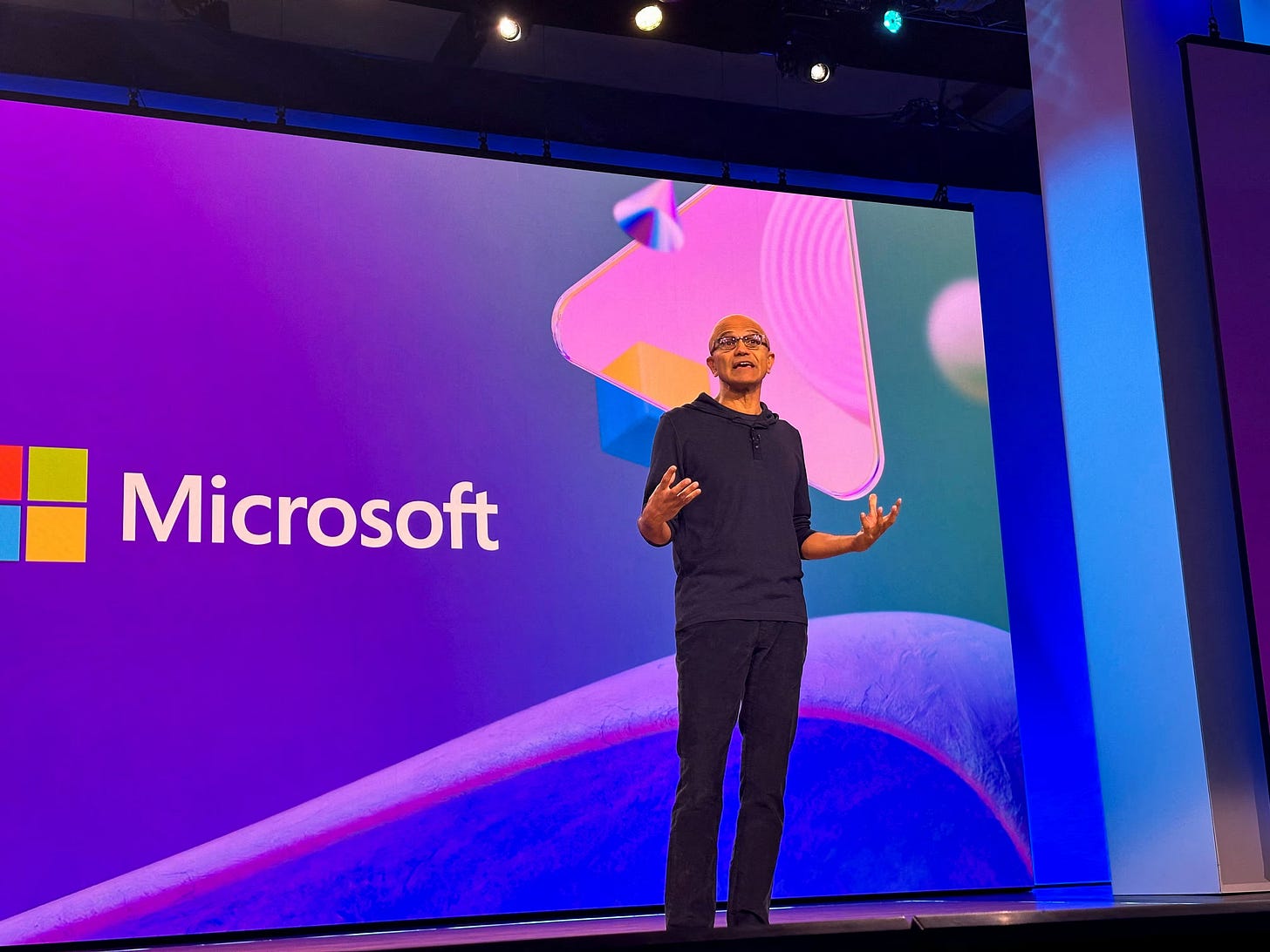12 Ways Microsoft Avoids Stranded AI Capital
Microsoft CEO, Satya Nadella, reveals how the company is engineering flexible, sovereign-ready AI infrastructure to avoid the trillion-dollar trap of stranded capacity.
Welcome to Global Data Center Hub. Join investors, operators, and innovators reading to stay ahead of the latest trends in the data center sector in developed and emerging markets globally.
Satya Nadella’s recent conversation with Dwarkesh Patel and Dylan Patel wasn’t a routine executive interview.
It was a rare, unfiltered look at how a hyperscaler’s CEO is redesigning Microsoft’s AI infrastructure to avoid the trillion-dollar trap of stranded capital.
Where chip cycles, model architectures, and geopolitical constraints can turn megawatts and GPUs into dead weight.
Nadella revealed Microsoft’s real playbook:
Build flexible capacity instead of locking into a single chip generation,
Compete across multiple model lineages instead of betting on one winner,
Architect data centers for a sovereign-by-default world, and
Convert massive capex into durable, long-term advantage.
Here are the 12 ways Microsoft avoids stranded AI capital.
1. Build infrastructure for flexibility, not a single chip or model lineage.
Designing data centers around one accelerator generation or model architecture creates stranded capital when power density, cooling, or model design shifts.
Microsoft responds by pacing builds, keeping fleets fungible across generations, and avoiding giant bets on one configuration. This protects the balance sheet against abrupt architectural breakthroughs and regulatory or geographic shifts.
2. Treat AI as a workflow revolution, not just a model race.
Economic impact comes when AI changes how work is done, not just when models improve on benchmarks. Microsoft’s focus is on embedding AI into tools, workflows, and artifacts so that output, productivity, and value per worker rise.
3. Rebuild software business models around real COGS and consumption.
AI inference makes per-user economics more complex than classic SaaS, since each user’s usage can carry meaningful compute cost. Microsoft keeps familiar meters (subscriptions, consumption, ads) but ties them to actual usage entitlements and tiers.
4. Aim for market expansion even if share drops.
In coding assistants, Microsoft moved from a dominant position to a more crowded field while the category itself expanded from hundreds of millions to billions in run-rate revenue. The company is comfortable with lower share in a vastly larger category if it owns key surfaces like GitHub and VS Code.
5. Own the scaffolding and control plane around models.
Microsoft sees long-term defensibility in the systems that orchestrate models: agents, control planes, observability, identity, storage, and developer workflows. Models can be swapped, commoditized, or replicated via open source and checkpoints but scaffolding tied to real workloads and data is harder to dislodge.
6. Run a multi-layer, multi-model strategy instead of betting on a single winner.
Microsoft commits to three layers: hyperscale infrastructure for many models, preferred access to OpenAI’s frontier models, and its own MAI models optimized for specific needs.
It accepts that multiple frontier labs and open source will coexist and designs business logic around composition instead of vertical lock-in. This reduces reliance on any single lab’s success and creates optionality across technological paths.
7. Avoid being a captive hoster for a single customer.
Microsoft stepped back from becoming a dedicated host for one model company at massive scale, even at the cost of near-term gigawatts and revenue.
The company wants a diversified book of workloads that aligns with its 50-year strategy not a concentrated, time-limited contract that could crowd out more attractive uses of capacity.
8. Use external capacity tactically while keeping platform control.
By signing deals with neocloud providers and GPU-as-a-service firms, Microsoft adds capacity where needed without committing full capex upfront. Those external providers plug into Azure’s marketplace, but customers still consume Microsoft storage, databases, and services. This lets Microsoft convert other firms’ capital into its own distribution and ecosystem growth.
9. Tie custom silicon to proprietary demand and IP, not prestige.
Microsoft will scale Maia accelerators only when they beat Nvidia on fleet-level TCO and when they are tightly coupled to proprietary models and system IP, including OpenAI’s work. Internal chips without strong owned demand risk becoming expensive vanity projects.
10. Treat AI capex as both industrial and knowledge investment.
The hyperscale buildout is capital-intensive, but returns depend on software skills that increase tokens-per-dollar-per-watt, fleet utilization, and workload scheduling efficiency. Microsoft’s edge comes from combining industrial execution (fast build, global footprint) with software that manages fungibility and eviction of workloads.
11. Budget research compute like R&D and keep the rest demand-led.
Microsoft separates “research compute” for frontier work from capacity justified by real customer demand. It doesn’t let aggressive lab revenue projections dictate the entire build plan. This discipline limits the risk that speculative model economics drag down overall returns.
12. Compete through trust, sovereignty, and resilience, not just performance.
In a world of geopolitical tension and sovereignty demands, Microsoft builds EU data boundaries, sovereign clouds, and confidential computing that align with national policies. Trust in American tech and institutions becomes a decisive edge in global AI adoption.

